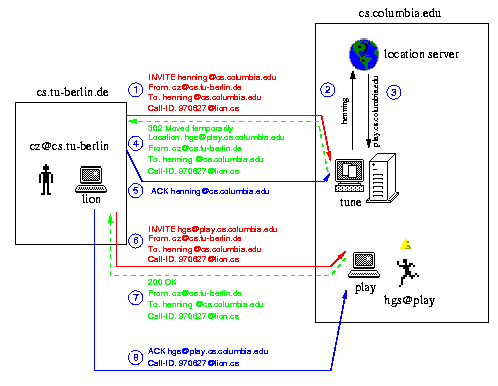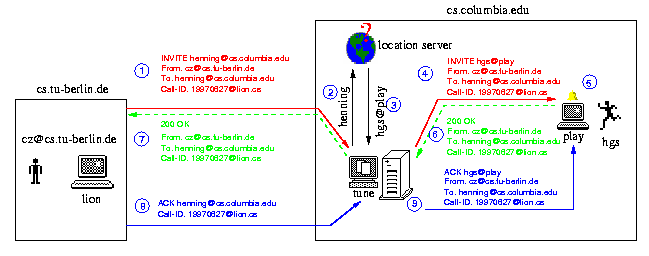
SIP provides the necessary protocol mechanisms so that end systems and proxy servers can provide services:
Extensions of SIP to allow third-party signaling (e.g., for click-to-dial services, fully meshed conferences and connections to multipoint control units (MCUs), as well as mixed modes and the transition between those) are available.
SIP addresses users by an email-like address and re-uses some of the infrastructure of electronic mail delivery such as DNS MX records or using SMTP EXPN for address expansion. SIP addresses (URLs) can also be embedded in web pages. SIP is addressing-neutral, with addresses expressed as URLs of various types such as SIP, H.323 or telephone (E.164).
SIP can also be used for signaling Internet real-time fax delivery. This requires no major changes. Fax might be carried via RTP, TCP (e.g., the protocols discussed in the Internet fax WG) or other mechanisms.
SIP is independent of the packet layer and only requires an unreliable datagram service, as it provides its own reliability mechanism. While SIP typically is used over UDP or TCP, it could, without technical changes, be run over IPX, or carrier pigeons, frame relay, ATM AAL5 or X.25, in rough order of desireability.


Last updated by Henning Schulzrinne